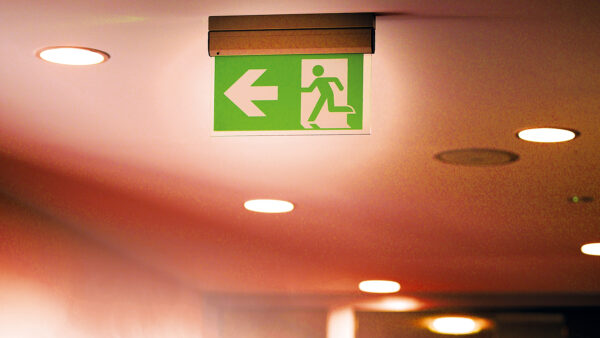The new role of building safety manager, set down by the Building Safety Bill, is a complex and important one. Where will they all come from?
How many construction safety professionals can say that they are well versed in all the following areas: fire safety legislation; fire safety management; building safety management; health, safety and wellbeing; technology and structures for building safety; and Building Regulations? Yet this is exactly what is expected from the new breed of building safety manager.
A building safety manager – a role that was set out in the new Building Safety Bill, which was published in July 2020 – will take on the day-to-day responsibilities for looking after fire and structural safety for buildings over 18m, or six storeys, high (see below).
It’s a challenging role, requiring competencies across a wide range of subjects, as outlined above. And we’re going to need thousands of building safety managers. Fortunately, some organisations are already on the ball. A training programme triggered by the concerns of a housing association and developed by training provider Housing LMS in conjunction with the Chartered Institute of Building (CIOB) already has 100 people in training or signed up with more courses on the way.
“It’s a very unusual course in that there is very diverse content, which has to be delivered by several different tutors, who are specialists not generalists,” explains Roger Gillespie, managing director of Housing LMS. “It’s not like anything I have ever seen before.”

The CIOB-approved training course leads to a Level 6 Diploma in Building Safety Management, equivalent to a bachelor’s degree, should all six modules be completed successfully. Candidates can also take individual modules. The first two units on fire safety legislation for construction and fire safety management for construction would lead to a certificate in fire safety for construction.
Creating the diploma
It was Trafford Housing Trust that triggered the creation of the diploma. Responsible for managing around 9,000 homes, the trust set up a new building safety team after Dame Judith Hackitt’s Independent Review of Building Regulations that followed the Grenfell fire. Its team includes two building safety managers and, through conversations between the trust and the CIOB about how these managers could be chartered, the diploma was born.
The pilot began in February 2021, with Housing LMS delivering it to a group from Clarion Housing. Clarion provides regular feedback on the course content, tutors and delivery that allows Housing LMS to fine-tune the various modules. “We are on our sixth start and the course has changed every single time,” explains Gillespie. “We are constantly learning ourselves and taking on board the feedback, within the constraints of the syllabus.”
The fire safety and building safety modules were the most demanding to create, says Gillespie. Given that the trigger for the creation of the building safety manager role was the Grenfell tragedy, the fire safety unit had to be very carefully thought out and designed.

“We partnered with a lot of industry leaders to make sure that we are teaching our candidates what they need to know.”
The building safety unit was equally challenging. “Whereas the other modules had elements of content from other courses, almost everything in the building safety module is new,” says Gillespie. “We partnered with a lot of industry leaders to make sure that we are teaching our candidates what they need to know.”
Candidates come from a wide range of backgrounds, says Gillespie, from housing associations, construction management consultancies, service providers to the public and private housing sectors, and general health and safety specialists. Each module is assessed, with candidates submitting work that is marked and – if necessary – reworked if they have not shown the required depth of understanding.
“The candidates are very diverse in experience,” says Gillespie. “Depending on the topic, you can have people who are viewed as experts and some who will have never seen the topic before. Nobody is coming to the course 100% in their comfort zone, although if you have a construction, health and safety or fire safety background some elements of the course will not be new to you.”
Until September 2021, Housing LMS was the only organisation providing the training. From September, the CIOB will also provide its version of the diploma.
Experts meet
Restrictions due to the Covid-19 pandemic have meant that all courses to date have been delivered virtually. This has both pros and cons, says Gillespie. The positives are that candidates and experts can be linked up wherever they are in the country. The cons can be that it is difficult for tutors to spot if candidates are struggling – hence the importance of marked assessments and feedback.
To get the most from online delivery, LMS Housing limits the number of people attending each course to 20. All sessions are delivered live via a webinar, one each week for around 40 weeks, with sessions recorded so that they can be viewed by candidates afterwards. A 10-minute networking session beforehand and a Q and A session afterwards aids learning.
“With experts among the candidates, it has been really important for us to track down tutors who are specialists in each field,” says Gillespie. “And where we know there are experts in the audience for that particular topic, the tutor involves them, so that their knowledge can be shared with the others in the group.”
At £2,500 + VAT, this is one of Housing LMS’s most expensive courses. However, demand is strong, with five groups of 20 already signed up. Another course starting in October was filling up when we spoke to Housing LMS in August. Considering that candidates are leaving the course with a degree-level qualification, perhaps this is rather a reasonable price to pay.
What is a building safety manager?
The Building Safety Bill, published in July 2021, creates the new role of building safety manager. The building safety manager must report to the ‘accountable person’ – the dutyholder for a building when it is under occupation. This is often the building’s owner or landlord. The Bill applies to high-rise blocks over 18m or six storeys high.
The building safety manager will hold day-to-day responsibility for ensuring the fire safety and structural safety of a building. This is a multi-faceted role, with
tasks that include:
- Ensuring the building meets health and safety legislation and Building Regulations;
- Recording and checking any works that take place on the building;
- Coordinating a compliance programme for elements such as fire equipment, portable appliances and alarms testing;
- Overseeing a fire risk management system including fire evacuation and security plans;
- Managing risk assessments;
- Contributing to internal policies and procedures.
Building safety managers must be certified and listed on a publicly held register. Independent not-for-profit organisation the Building Safety Alliance, launched in July 2021, will be responsible for certification and registration.











